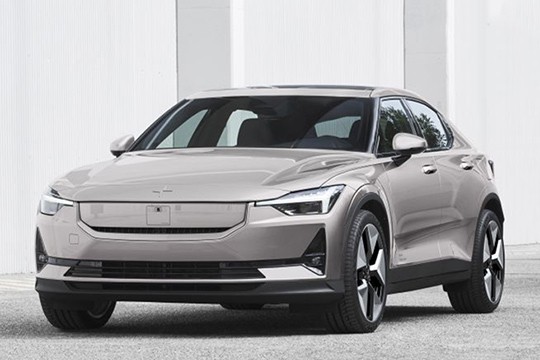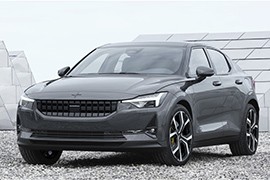POLESTAR 2 Models/Series Timeline, Specifications & Photos
First production year: 2019
Engines: Electric
Polestar upgraded its five-door EV a boost in 2023 for the 2024 model year, and besides the updated exterior, it also offered new options for the drivetrain.
The Swedish brand has been focused on performance electric vehicles and was as relentless. After successfully introducing the 2 on the market in 2017, it continued improving the car. But instead of adding small upgrades year by year, it gathered them and put them all together in the facelifted 2024 model year.
With its minimalist design language, Polestar 2 was a distinct appearance on the market. Not only that, it came with a prestigious heritage but also with a promise of safety. In addition, the 2024 model year came with a flat panel between the headlights instead of an egg-crate grille like its predecessor. In addition, the vehicle sported new 20” light-alloy wheels.
Inside, the automaker installed standard wireless charging on the entire range and improved the safety systems. In addition, it came with Cross Traffic Alert, Rear Collision Warning and Mitigation, and a 360-degree camera.
But the most significant upgrades were on the drivetrain, where the automaker installed a 69 kWh battery pack for the base version with an option for an 82 kWh. Single motor versions featured a rear-wheel drive system instead of FWD as on its predecessor. At the same time, the twin-motor vehicles have received a 10 kWh (14 hp) boost over the 2017 model year. Top of the range version featured a Performance Pack option that provided 350 kW (476 hp) sent in all corners.
Polestar introduced the 2 as its second vehicle on the market, and unlike its predecessor was a full-electric vehicle, targeting Tesla's Model 3 sedan.
Owned by the Chinese group Geely, Polestar was created as an alternative brand for the Swedish automaker Volvo. Backed by its owner's deep pockets, it created a powerful sports sedan built on top of a 100% electric powertrain fed by a 78 kWh battery pack. Still, the car's look resembled the Swedish design school, and its interior sported some unique features.
Even though it wasn't a Volvo, it still sported the T-shaped LED daytime running lights inside its headlights. Its egg-crate grille was mostly covered since it didn't need too much cooling area, and the lower bumper was not exactly menacing. The vehicle's profile revealed its high stance and the sloped-down tailgate. Even though it looked like a sedan, it was actually a hatchback. Finally, the rear fascia revealed a unique-looking LED shape that emerged from one taillight to the other, crossing the rear panel.
Inside, the minimalist design resembled some Volvo bits and pieces, such as the steering wheel, the stacks behind it, or the shape of the headrests. Atop the center stack, Polestar installed the touchscreen for the infotainment system that ran on Android, easing the connectivity with mobile phones and working mostly like a big smartphone. Fronting the driver in the instrument cluster was a second display that showed information about the car's speed, navigation, and charging status. In the back, the bench-seat was suitable for three persons. Still, since the 2 got its platform from the XC40 from Volvo, it had a transmission tunnel where the automaker placed some of the batteries.

